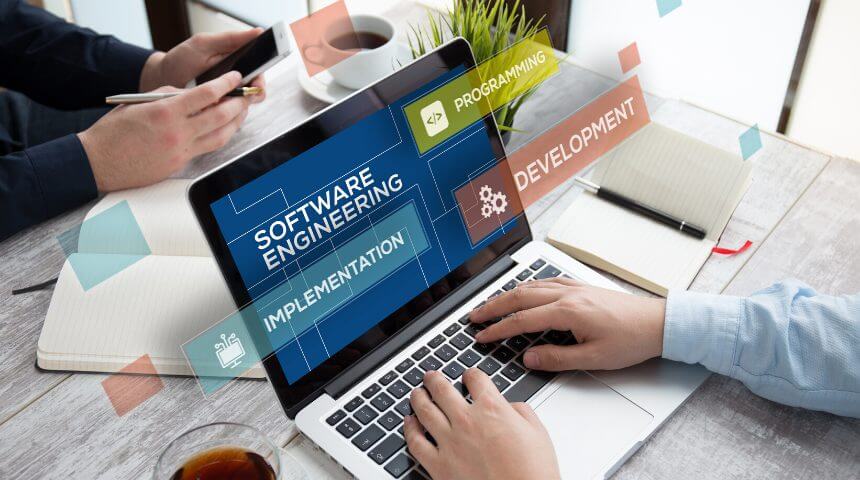Buy, build, or subscribe? This is a major decision that companies struggle with when investing in a platform to manage their supply chain.
This struggle is real, and the wrong choice can be costly and time-consuming. In many organizations, I have seen this decision is typically addressed from the top down. Executives will tend to partner with widely recognized companies that come with high price tags, extremely complex customization, and long onboarding processes. Most do not do the required research to find the right platform for their organization; however, inadequate research impacts far beyond just the operations team. One reason is that supply chain processes affect all departments. When executives decide to invest, every department must have a say in what this new solution delivers. Organizations need to assess what is currently working but can be improved; and what is currently broken and needs significant improvements. These are typical scenarios that technology solutions are built to solve.
So, you have done your due diligence on why a new solution is needed, and you have polled every department to build your “got to have” requirements. What now? What are your options? Let us briefly review what they are.
Build

In my opinion, this would be the least favorable decision for organizations that do not have an engineering team. Some can argue that the organization would be the only experts on how to run their business and what a system would need to improve those processes. However, when you look at the entire investment of taking on a project like developing your SCM system, operational expertise would not be enough. To make this option feasible, you would need some to build out a team of experts in software development, infrastructure architecture, and integrations, to name a few. This choice would cost your organization thousands, if not millions, in salaries, benefits, and overhead to support a team.
It can be argued that an internal team is not necessary and that the build can go through a group of contractors. Yes, this is an option, but it is a costly option, and one that may leave you with a solution based on your current needs but will be a continued cost to your organization for updates as your organization scales. You must also consider if you are willing to share your proprietary solution with outside organizations with the application knowledge, infrastructure, and maintenance to build similar solutions with their other customers.
Additionally, one of the biggest obstacles to building your own SCM software is integration. Out of the box, you will not have APIs, SDKs, or even documentation for both consumption and exposure to data and processes necessary to communicate with other systems across the value chain like WMS, vendors, inventory systems, and logistics partners.
Buy

In most cases, buying an SCM solution is the most popular option chosen by larger organizations. This option is also extremely expensive as you will most likely purchase a solution that you will need to tailor to your business. With these more comprehensive solutions, the cost can include customization. However, this is not always the case and can wind up costing your organization in fees paid to a separate vendor or consulting firm that handles customizations. The need for customization will likely create an 8 to 12-month onboarding timeline. If you are a large organization where new technology investments are typically a lengthy and costly process, this may be acceptable and probably is already regrettably in place. However, this may still be a better solution than building your own SCM solution.
Additionally, there is a large dependency on hosting your purchases solution. Either in the cloud or on-prem, you may be taking on the responsibility to maintain the solution and the infrastructure it requires. Most purchased solutions will have established integration processes that you will benefit from, which will probably lead to more time and money spent on consultants.
Subscription

Last but not least, this is typically the most sought-after solution. Subscription-based supply chain solutions are less expensive than building or buying. They offer many types of services like freemium, paid trials, and standard or premium accounts. Usually, a subscription fits your current needs with the ability to scale up as your organization grows. Subscription-based platforms are also flexible in pricing, some of which can be based on the volume or number of users. This flexibility provides an option to drive usage before committing to a larger contract with the solution provider.
Subscription-based solutions are also cloud-based. This means that the solution price covers all the responsibility for the platform’s availability and maintenance. More importantly, subscription-based cloud platforms are highly sought-after because the solution can support many customers. All customers benefit from the feedback of multiple companies to improve current and future feature sets. Another benefit is a simplified configuration process. Since these solutions service numerous customer types, cloud-based SCM software allows customers to easily configure the solution with easy-to-follow instructions or a quick session with a customer success manager.
Lastly, I have found that when looking for SCM solutions that the subscription cloud-based ones typically have integration options to most of the large WMS, vendor and inventory systems, and logistics providers, which can be set up by the users.
The build vs. buy, and in this case, subscription decisions have been around for some time. When we speak of these solutions, we must remember that most established organizations have been using the same systems for many years. In most cases, their processes are so deeply rooted in the daily operations that the thought of replacing these systems is a nonstarter. While change is often uncomfortable, I would like to leave you with the encouragement to move past the initial reluctance. As we have come to reimagine “normal” on a global scale in 2020, the new generation of supply chain solutions can reimagine the heights you can take your business through improved margins and timelines. The question is: are you ready to be the innovator leading that change?
